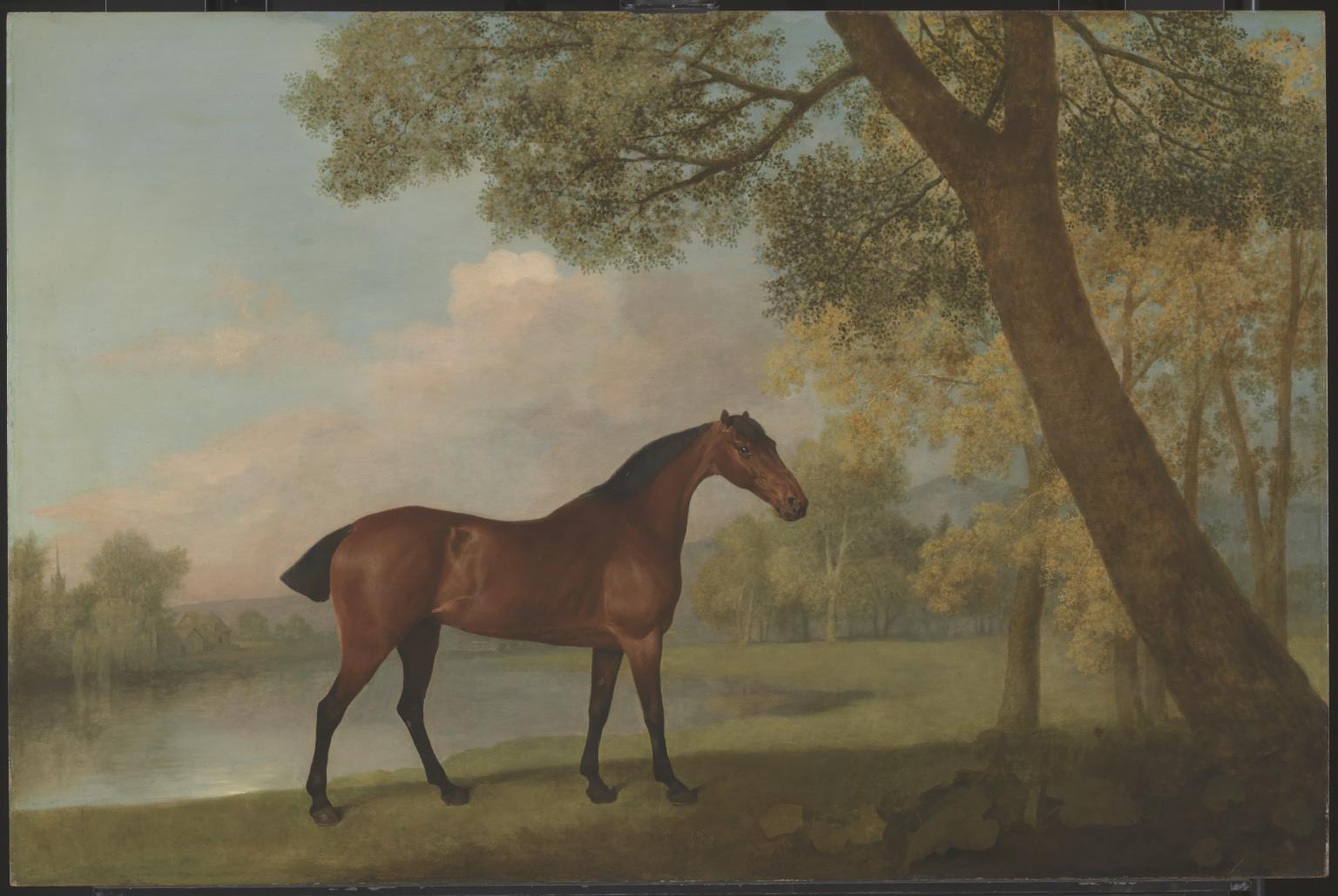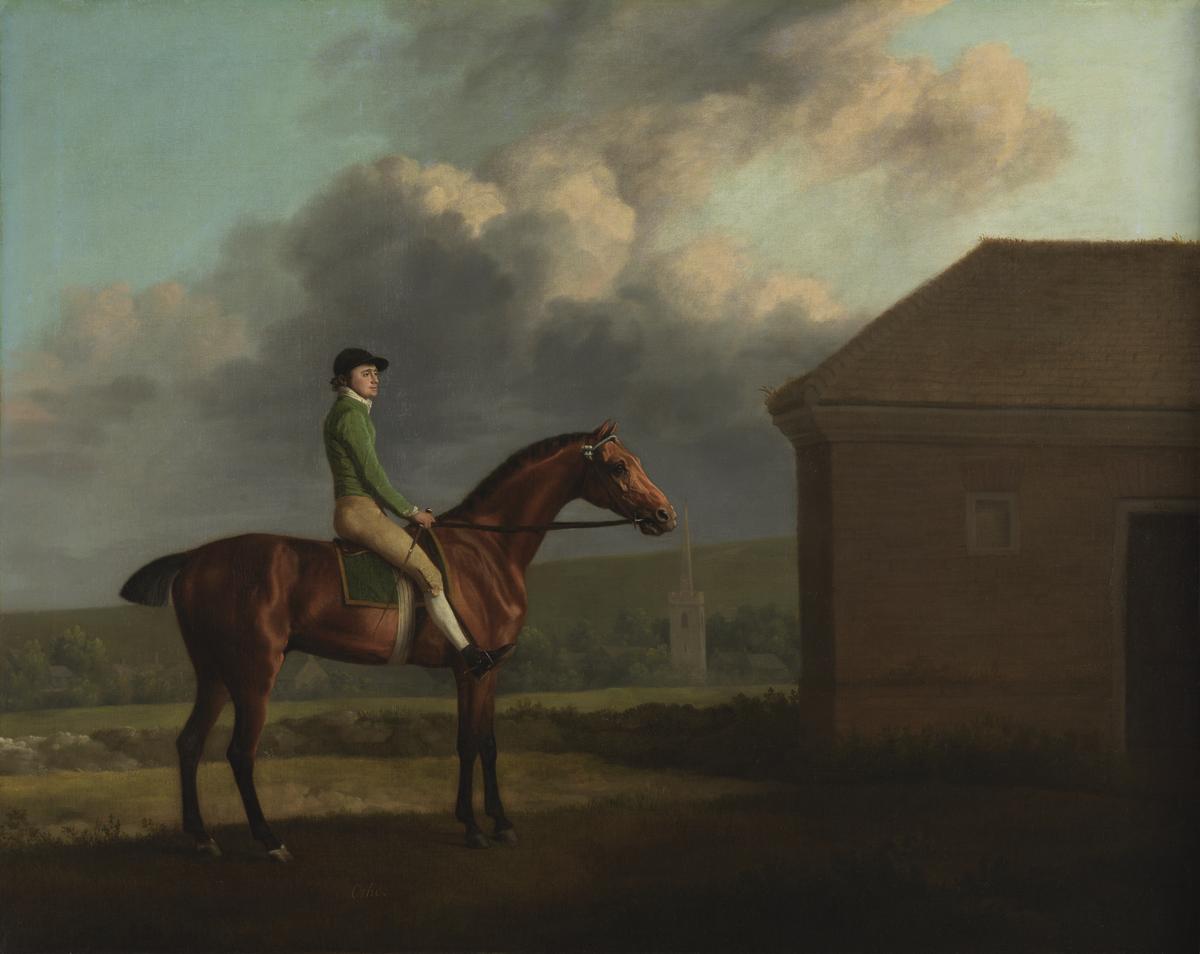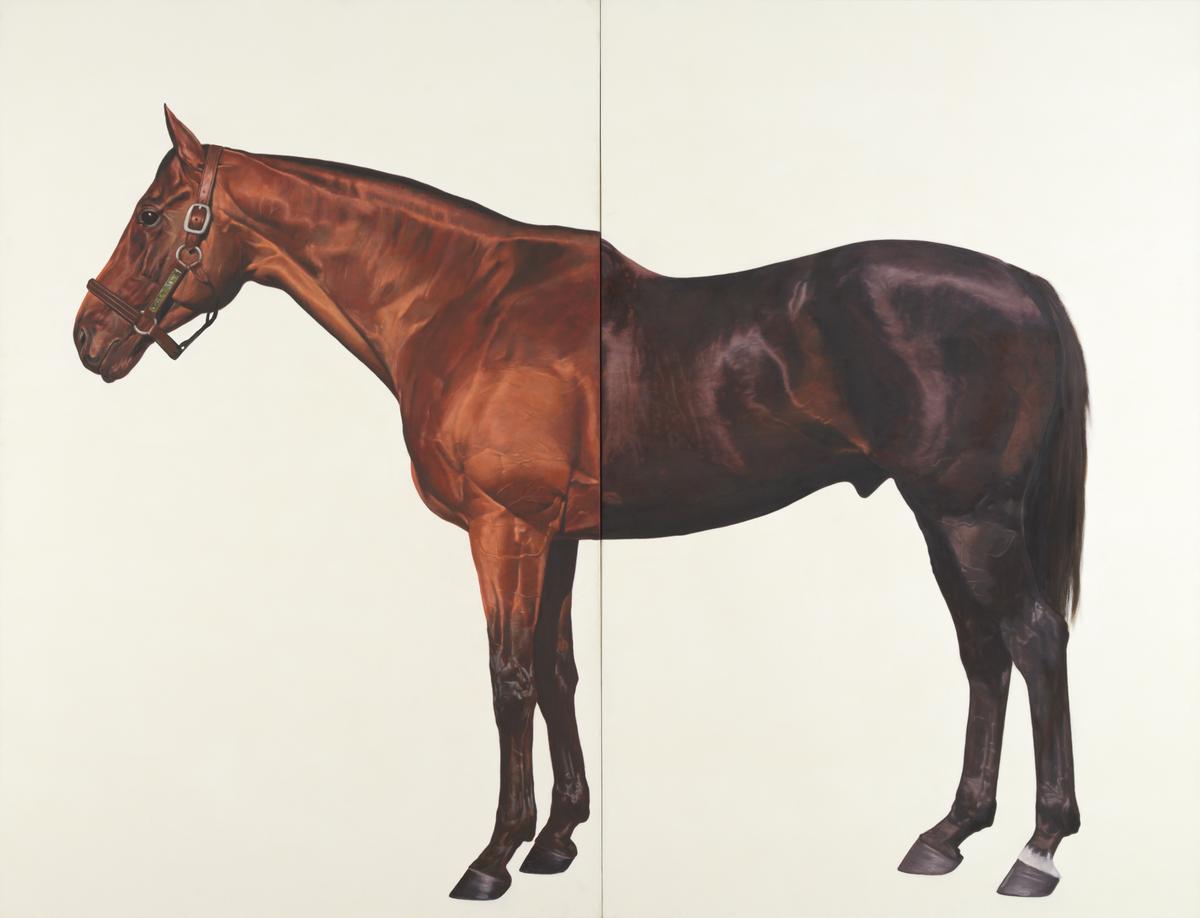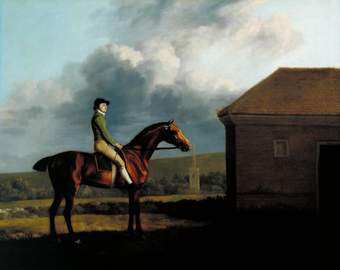17 rooms in Historic and Early Modern British Art
Two artists, born three centuries apart, combine anatomy and expression in their portraits of racehorses
2024 marks 300 years since the birth of the animal painter George Stubbs. Today he is celebrated as one of Britain’s greatest horse painters. This display brings together paintings by Stubbs with a contemporary horse painting by Mark Wallinger.
Stubbs’s representation of horses marked a milestone in animal and sporting painting. Rather than horses appearing as a supporting character or accessory to the sitter, he made them the focus of his paintings. Stubbs elevated animal painting in the eighteenth-century visual hierarchy of painting that privileged idealised scenes from antiquity, modern history, mythology and literature. He was devoted to understanding the physical structure of horses, from the hide to the muscles, arteries, tendons, and down to the bone. By studying the anatomy of horses, Stubbs achieved unprecedented realism in his images.
Stubbs was highly in demand as a horse painter. He was commissioned by wealthy aristocratic landowners who raced and bred horses. Stubbs’s association with social class, power and the notion of national identity has influenced Wallinger’s artistic practice. Wallinger says, ‘[Stubbs] uncovered the structures of the creatures he depicted as well as understanding the structures of power and patronage he worked with as an artist.’
Art in this room






